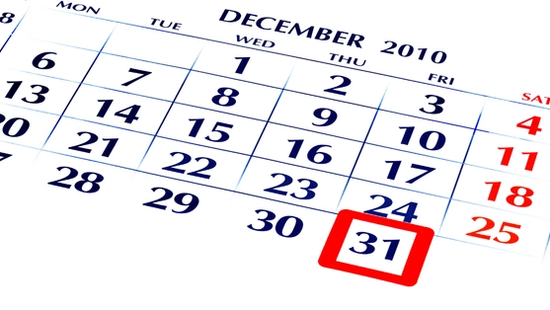Top 20 Direct Mail Myths Busted: The Truth Revealed
Direct mail myths are holding your marketing back. Uncover the truth, boost ROI, and see why direct mail still works. Read now and power up your results!

Even in today’s world, direct mail refuses to fade away. It’s bold. It’s personal. It gets noticed. While online ads flash across screens and disappear, a physical mail piece lingers. You can hold it, feel it, remember it. That’s power and it’s measurable, data-driven, and surprisingly effective.
Still, many businesses, especially small ones, brush it off. They assume it’s outdated. Expensive. Inefficient. But here’s the truth: the numbers say otherwise. Direct mail works, and it works well.
This series will crush the biggest myths holding marketers back. One by one. We’ll replace assumptions with facts, showing how modern direct mail blends targeting, automation, and digital integration into one smart, unstoppable system.
From real estate to retail, healthcare to professional services direct mail delivers results. Fast. Precise. Proven.
If you’re new to it, start with the basics. Learn what direct mail is. See how it’s evolved in the digital age. Understand why it continues to outperform many online-only campaigns when done right.
Because here’s the bottom line: direct mail isn’t just surviving in a digital-first world, it’s thriving.
Here are The Top 20 Direct Mail Myth
Myth #1: “Direct mail is dead”
Let’s start with the big one. Many marketers assume that with the rise of email, social media, and paid search, direct mail has lost its relevance. In reality, direct mail still works—and works remarkably well.
According to the Data & Marketing Association (DMA), direct mail response rates average around 4.9% for prospect lists and 9% for house lists, far surpassing email’s average of less than 1%. What’s more, direct mail captures 42% more attention than digital ads, making it ideal for building brand recall and credibility.
Modern direct mail isn’t just about postcards and envelopes. Today, it’s highly targeted, data-driven, and personalized, often integrated with digital campaigns to create an omnichannel experience. If you’re curious about how it’s evolved, read The Evolution of Direct Mail.
Myth #2: “Direct mail ROI is too low”
This is another misconception that stems from outdated assumptions. Businesses today can achieve high ROI through well-planned campaigns. In fact, according to the ANA (Association of National Advertisers), direct mail delivers an average ROI of 112%, outperforming many online channels.
The key lies in execution. When you apply direct mail campaign best practices from clean data lists and compelling creative to smart timing and multi-touch follow-ups,, you can see significant returns.
For instance, a dental clinic targeting new movers can use direct mail to introduce services and promotions to families who’ve just relocated nearby. These tangible, targeted mailers often lead to high conversion rates, especially when paired with QR codes or personalized URLs that drive traffic online.
For tips on increasing profitability, check out how to improve your direct mail ROI.
Myth #3: “You can’t track direct mail”
Many marketers assume that because direct mail is physical, it can’t be tracked like digital ads. But that’s far from the truth.
Modern direct mail uses tracking tools and analytics that provide clear visibility into campaign performance. You can use:
- Unique phone numbers or extensions for each campaign
- Personalized URLs (PURLs) to track online visits
- QR codes that capture engagement data
- Coupon codes to measure redemption
By combining these tools with CRM data, marketers can calculate conversion rates, measure ROI, and even retarget leads across digital channels.
Learn how new technology is shaping this transformation in how tech is reinventing dental direct mail marketing.
Myth #4: “Younger audiences don’t respond to direct mail”
You might think Gen Z and Millennials are glued to their screens but studies show they actually enjoy receiving physical mail. Research from USPS reveals that 75% of Millennials say receiving mail makes them feel special, and 90% of Gen Z consumers prefer brand experiences that include tactile elements.
The tactile and personal nature of mail stands out in a digital world cluttered with ads and pop-ups. A well-designed piece such as a beautifully printed dental mailer offering a free consultation, can make a stronger impression than a fleeting social ad.
If you’re wondering how to make your mailers pop, explore Direct Mail Printing: Everything You Need to Know.
Myth #5: “Direct mail is not environment-friendly”
This myth persists because people associate paper with deforestation. However, modern direct mail is more sustainable than ever. The paper industry relies heavily on renewable forests, trees are planted faster than they’re harvested and most mail pieces today are printed on FSC-certified recycled paper.
In addition, advancements in printing technology have reduced waste, energy use, and harmful chemicals. Smart targeting also ensures that mail isn’t sent blindly but rather to data-verified, relevant audiences, minimizing unnecessary production.
For an even deeper dive into the value and effectiveness of print mail, read Advantages of Direct Mail Advertising.
Myth #6: “Direct mail is too expensive for small businesses”
Many small business owners shy away from direct mail due to a misconception that it’s costly. While there are upfront costs for printing and postage, the actual direct mail cost is highly flexible and scalable.
A small dental practice, for example, can start with a targeted local campaign for just a few hundred addresses instead of a full city-wide drop. The average postcard campaign can cost as little as $0.50 to $2.00 per piece, depending on design, quantity, and targeting.
When done strategically with proper segmentation, personalization, and timing, direct mail delivers a strong ROI that outweighs its cost. To understand the full breakdown of pricing and how to optimize your budget, read How Much Does Direct Mail Cost.
Myth #7: “Direct mail only works for older audiences”
It’s true that older demographics engage well with direct mail but they’re not the only ones. In fact, modern direct mail reaches multi-generational audiences effectively when crafted with smart messaging.
Millennials, for instance, are the most responsive demographic to direct mail according to USPS research. They appreciate tangible communication that stands out from digital clutter. Whether it’s an invitation to a new dental clinic or a discount card for a fitness center, physical mail still commands attention from people of all ages.
The secret is in personalization and relevance, two elements that make mail feel meaningful and authentic, regardless of the recipient’s age.
Myth #8: “Direct mail isn’t data-driven”
Gone are the days of sending out generic flyers. Today’s modern direct mail marketing is powered by data and analytics. Marketers can target audiences based on geography, purchase history, demographics, or even online behavior.
This means that every mail piece can be strategically aligned with the customer journey, similar to how digital campaigns are optimized. By analyzing engagement metrics such as scan rates or conversion patterns, businesses can refine their lists and messaging over time.
Direct mail has become a precision marketing tool, blending creativity with analytics to deliver measurable outcomes.
Myth #9: “Direct mail doesn’t integrate with digital marketing”
One of the biggest misconceptions is that direct mail operates in isolation. The truth? Direct mail integrates beautifully with digital marketing strategies.
Modern marketers combine mailers with tools like:
- QR codes that drive users to landing pages or appointment forms.
- Email follow-ups triggered after a mailer is delivered.
- Retargeting ads to reinforce brand messaging across channels.
For instance, a dental office might send out postcards offering teeth-whitening discounts and follow up with an email reminder or a Facebook ad. This omnichannel approach ensures multiple touchpoints that guide prospects toward conversion.
If you’re deciding between channels, explore Direct Mail vs. Email Marketing: Which Is Better for deeper insights.
Myth #10: “Response rates from direct mail are too low”
This myth couldn’t be further from reality. The average direct mail response rate is far higher than most digital formats. According to the ANA/DMA, direct mail response rates can be 4–9%, compared to just 0.6% for email and 0.4% for social media ads.
These numbers highlight why direct mail remains a trusted and effective conversion tool, particularly for local service businesses. Its physical presence enhances brand credibility and ensures the message doesn’t get lost in the noise of online platforms.
For marketers seeking actionable tips to boost performance, visit Direct Mail Marketing Tips: Strategies to Boost Conversion.
Myth #11: “Direct mail has low personalization potential”
Many believe personalization is limited to digital channels but that’s no longer the case. Modern printing technology allows businesses to personalize every piece of mail with individual names, offers, and imagery that resonate with each recipient.
Variable data printing (VDP) enables mailers to adapt based on age, location, or buying habits. For example, a dental practice could send out mailers highlighting different services like orthodontics for families or whitening treatments for professionals based on household demographics.
Personalized direct mail not only captures attention but also builds stronger relationships through relevance and empathy.
Myth #12: “You can’t automate direct mail”
Automation isn’t just for emails anymore. With the rise of API-driven print and mail platforms, businesses can now automate their direct mail processes from start to finish.
Imagine sending postcards automatically when:
- A new customer signs up on your website.
- A patient hasn’t scheduled a dental checkup in six months.
- A lead downloads a brochure from your landing page.
These automated triggers make direct mail timely, consistent, and scalable allowing businesses to nurture leads and maintain communication without manual effort.
To learn more about setting up automation in your campaigns, read How to Do a Direct Mail Campaign Successfully.
Myth #13: “Direct mail doesn’t provide analytics”
Many assume that physical mail lacks the data insights of digital campaigns. In reality, direct mail analytics have become more advanced than ever.
With tools like tracking URLs, QR codes, and custom landing pages, marketers can monitor open rates, engagement, and conversions in real-time. Integrating mail data into CRM systems allows teams to analyze performance by audience segment, location, or campaign type.
This means you can measure KPIs, just like you do with PPC or email making direct mail a measurable and accountable marketing tool.
For a closer look at campaign optimization, check out How to Improve Your Direct Mail ROI.
Myth #14: “Direct mail wastes paper and hurts the environment”
This misconception continues to linger, but it doesn’t align with current practices. The modern printing industry has made eco-friendly direct mail a top priority.
Most mail today is printed on recycled, sustainably sourced paper and uses vegetable-based inks. The U.S. paper industry also plants millions of trees annually, maintaining forest growth rates that exceed harvesting. Furthermore, precise targeting ensures that fewer irrelevant pieces are printed and mailed, significantly reducing waste.
Responsible marketing doesn’t just rely on paper, it leverages strategy and sustainability together, creating effective campaigns without compromising the environment.
Myth #15: “Direct mail is outdated in the digital age”
Far from being outdated, direct mail has evolved into a modern hybrid marketing channel that works hand-in-hand with digital platforms. Marketers use it to cut through digital fatigue, reconnect with audiences, and enhance brand trust.
It’s no longer a question of “digital vs. print”, the winning formula is digital + print. From retargeting mailers triggered by online behavior to personalized postcards sent after a website visit, direct mail fits seamlessly into the modern marketing ecosystem.
For real-world examples, see How Effective Is Direct Mail Marketing.
Myth #16: “Direct mail can’t be tested or optimized like digital ads.”
In truth, direct mail testing has become a science. You can A/B test offers, headlines, designs, or audience segments, just like digital ads.
For example:
- Test two postcard designs to see which gets a higher scan rate.
- Experiment with different call-to-action messages.
- Adjust targeting criteria to improve response rates.
By tracking results, marketers can refine future campaigns for better engagement and profitability. Direct mail optimization isn’t theoretical, it’s an ongoing process rooted in data and measurable outcomes.
Myth #17: “People throw away direct mail without reading it.”
Studies show the opposite. According to USPS research, 77% of consumers sort through their mail immediately, and 42% read or scan mail pieces they receive.
When designed with clear branding, compelling offers, and personalization, direct mail grabs attention. Unlike fleeting emails or banner ads, mail demands a moment of focus, a crucial advantage in the modern attention economy.
Brands that tell a story or offer tangible value through print are far more likely to leave a lasting impression.
Myth #18: “Direct mail doesn’t generate online conversions.”
Direct mail not only drives offline actions, it’s also a powerful trigger for online engagement. Campaigns that include QR codes, discount URLs, or landing pages seamlessly bridge physical and digital experiences.
In fact, a well-designed postcard can guide a recipient directly to your website or booking form. For example, a dental clinic offering new-patient specials can include a QR code linking to an online appointment scheduler, boosting both convenience and conversion rates.
To learn how offline mailers can drive online results, explore Why Direct Mail Beats Digital Ads for Dental Offices.
Myth #19: “Direct mail is only for B2C marketing.”
Another false assumption. Direct mail performs exceptionally well for B2B campaigns too. From appointment-setting postcards to corporate event invitations, businesses can use mail to reach key decision-makers directly often bypassing crowded digital inboxes.
In B2B contexts, a well-timed piece of mail can humanize your brand and build trust faster than an email drip campaign. It’s tactile, professional, and memorable, qualities that influence purchase decisions in competitive markets.
Myth #20: “Direct mail takes too long to execute.”
While traditional processes once made mail campaigns time-consuming, automation and technology have changed the game.
With today’s tools, you can design, print, and send mail within days, not weeks. Automated workflows connect CRM or marketing platforms directly to print systems, allowing for trigger-based mailers that launch instantly after a user action.
For instance, if a website visitor requests a quote, a personalized mailer can be automatically generated and sent the same day. Speed, efficiency, and personalization now go hand in hand.
Discover how modern systems accelerate success in How Tech Is Reinventing Dental Direct Mail Marketing.
Conclusion
As we’ve uncovered throughout this series, direct mail isn’t outdated, it’s evolved, trackable, sustainable, and data-driven. Whether you’re targeting new patients for a dental practice or nurturing leads for a national brand, direct mail remains one of the most effective marketing channels available.
It works best when integrated with digital efforts, customized for specific audiences, and backed by strong analytics. Modern direct mail combines the personal touch of print with the precision of technology, producing results that digital ads alone can’t match.
If you’re ready to see how direct mail can transform your marketing strategy, visit MVP Mailhouse or schedule a demo today to learn how our proven system helps businesses connect, convert, and grow.
Tags
Frequently Asked Questions
Related blog



